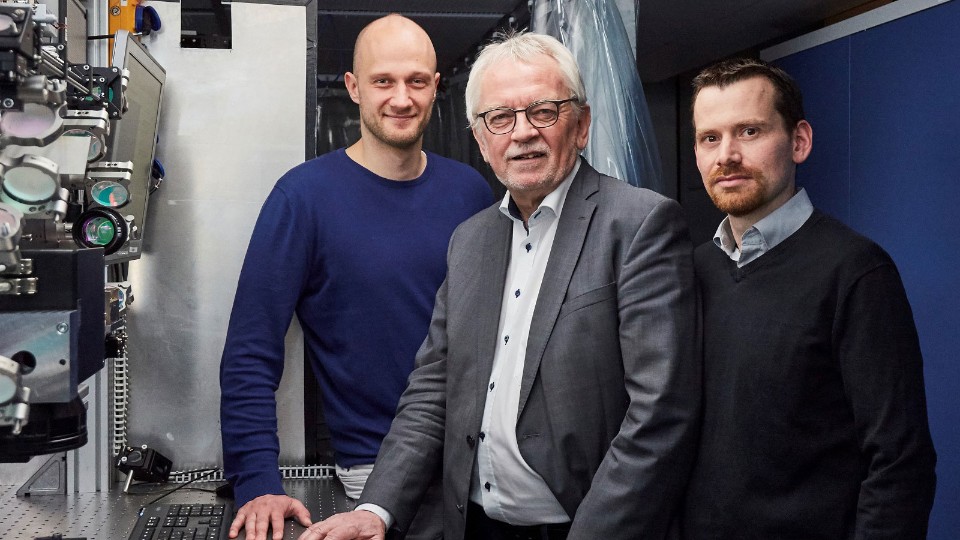The fine art of cloning tools

Privacy warning
With the click on the play button an external video from www.youtube.com is loaded and started. Your data is possible transferred and stored to third party. Do not start the video if you disagree. Find more about the youtube privacy statement under the following link: https://policies.google.com/privacyMartin Reininghaus, Dr. Arnold Gillner and Dr. Johannes Finger (from left to right). For their development they received the science award of The Stifterverband für Verbundforschung, a donors’ association for joint research.
Winners of the Stifterverband Science Prize 2020:
Dr. Arnold Gillner, Martin Reininghaus und Dr. Johannes Finger (Fraunhofer Institute for Laser Technology ILT)
Dr. Stephan Brüning (Schepers GmbH & Co. KG)
Dr. Gerald Jenke (Matthews International GmbH)
Dr. Keming Du (EdgeWave GmbH Innovative Laser Solutions)
Dr. Manfred Jarczynski (LIMO GmbH)
Ultrashort pulse lasers for large components
A paradigm shift is underway in manufacturing. A research team with staff from the Fraunhofer Institute for Laser Technology ILT in Aachen on its roster has broken new ground by using numerous laser beams as tools to structure surfaces. This accelerates the process and opens the door to new applications. The Stifterverband für Verbundforschung, a donors’ association for joint research, has seen fit to acknowledge the efforts of these researchers with its Science Prize.
Ultrashort pulse lasers can serve to apply functional microstructures and nanostructures to any surface. This type of laser machining is usually done by just one beam from a single source, a far too time-consuming and thus expensive approach to applying the micro- and nanostructures to the large embossing rollers that imprint textures and patterns on fabrics, leather and cardboard. This is why the practice of etching such structures into embossing rollers has prevailed. This is hardly ideal from the environmental perspective, but there was no economically viable alternative – until now, that is.
Anything but corrosive
A special sort of teamwork has turned laser structuring into a sound business proposition. Instead of a lone ultrashort-pulsed laser beam roaming the surface, the laser energy is split into many laser beams of equal power – specifically, into 200 partial beams. A special optical system serves to control these beams individually and modulate their power. This has created a new digitally-driven tool. With so many of these tools working the surface simultaneously, this process is manyfold faster than conventional laser machining. It is the first affordable option for machining large components. Developed in a joint project called MultiSurf, this technology owes its existence to Dr. Arnold Gillner, Martin Reininghaus and Dr. Johannes Finger from the Fraunhofer Institute for Laser Technology ILT, Dr. Stephan Brüning from Schepers GmbH & Co. KG, Dr. Gerald Jenke from Matthews International GmbH, Dr. Keming Du from EdgeWave GmbH Innovative Laser Solutions, and Dr. Manfred Jarczynski from LIMO GmbH. They have been singled out to receive the Science Prize from the Stifterverband für Verbundforschung for their efforts.